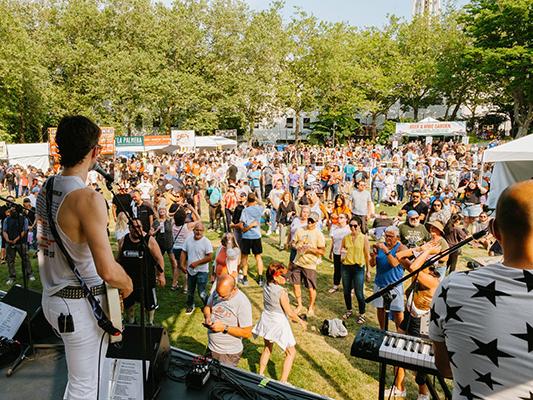Economic Revitalization
Tracking downtown revitalization
Since the onset of COVID-19, DSA has been tracking the impact on our local economy. As downtown bounces back, we continue to follow dozens of metrics to trace the path to full economic recovery. A few of these metrics are below.
Downtown Revitalization Dashboard
July 2025 (June data)
Downtown Seattle was the first American urban center to experience the impacts of COVID-19, enduring a sudden economic downturn. As downtown continues to evolve, DSA will publish a monthly Revitalization Dashboard examining key metrics. The data sets provide a comparison point to the same time period in 2019. Additionally, the dashboard will feature notable stories that provide context regarding downtown’s renewal and reemergence.
Please credit the Downtown Seattle Association Revitalization Dashboard for use of charts, data and images on this page.
Unique monthly visitors compared to 2019
More than 3.1 million unique visitors came downtown in June 2025. This represents 94% of the visitors seen in June 2019. Placer data only counts domestic visitors.
Average weekday worker foot traffic
In June, downtown’s worker foot traffic was 66% of June 2019’s daily average — the highest rate of monthly worker foot traffic recovered since March 2020. This figure represents more than 152,000 daily worker visits and a 5% increase from June 2024.
Monthly hotel rooms sold compared to 2019
There were more than 383,000 downtown hotel rooms sold in June 2025. This figure represents 100% of the demand in June 2019, but also a 4-point decrease in demand compared to June 2024.
Quarterly
In June, the number of occupied apartment units downtown continued growing, rising to nearly 60,000. This represents a 4% increase compared to Q2 2024 and a 22% increase compared to Q2 2019.
Of Note in Downtown
![]()
In June 2025, people who live and work downtown averaged 23,650 daily visits. This is a 38% increase from June 2019.
![]()
The number of passengers entering Washington state from Canada at the Blaine, WA border crossing totaled 541,886 in May 2025, a 35% decline compared to the number of entries in May 2024. June 2025 data not available at the time of publishing.
![]()
June 2025 saw the largest number of visitors to First & Pike since 2019, as people continue to enjoy a new pedestrian-only half-block stretch of Pike Street. This represents an 85% increase in visits to this space compared to June 2024.
Coming Up in Downtown

The Alaska Airlines Seafair Torchlight Parade — back to its roots with a nighttime start and a new route along the waterfront — makes its highly-anticipated return to evening hours on Saturday, July 26 from 7:30–10:30 p.m. And don’t forget about the Seafair Weekend Festival — Seattle’s premier boating event, air show and festival all rolled into one — from Aug. 1–3.

Seattle Center’s Bite of Seattle, an annual three-day food festival, will feature more than 300 food and retail vendors, beer and wine gardens, cider tastings, local art, over 65 musical performers and more. On Friday and Saturday, July 25–26, the festival is open from 10 a.m.–9 p.m., and July 27 from 10 a.m.–8 p.m.

Seattle Seahawks Football Fest takes over Lumen Field at 6 p.m. on Aug. 2. Attendees will get a preview of the upcoming team and season in an evening full of football, family and fun. Doors open at 5 p.m. and tickets can be purchased online.
COVID-19 Downtown Recovery Weekly Snapshot
These charts show weekly statistics from March 2020 through the most recent week available. To indicate the level of recovery, data is displayed as a percent of the same metric for the comparable week of 2019.
Notes on Sources
Downtown foot traffic data are provided by Placer.ai and are based on cell phone location data. Each person is counted once per day. International visitors are not included. Subsets of this data in the charts are as follows:
- Office worker presence is estimated based on visits by workers who were present between 8 a.m. and 6 p.m. on weekdays in downtown Seattle.*
- Hotel data are based on monthly reports from STR, provided by Visit Seattle.
- Apartment occupancy data are from CoStar. This is reported quarterly but the current quarter data are updated in real-time as new information is added to the database.
- Domestic visitors counts those who do not live or work downtown.
- Total foot traffic includes all visits to downtown by domestic visitors, residents and workers.
- Pike Place Market visitors includes domestic visitors who do not live or work at the Pike Place Market.
*Note that workers who have not visited their work site in the past 90 days are classified as “visitors” until they are regularly visiting their work site at least three times in a one-week period.